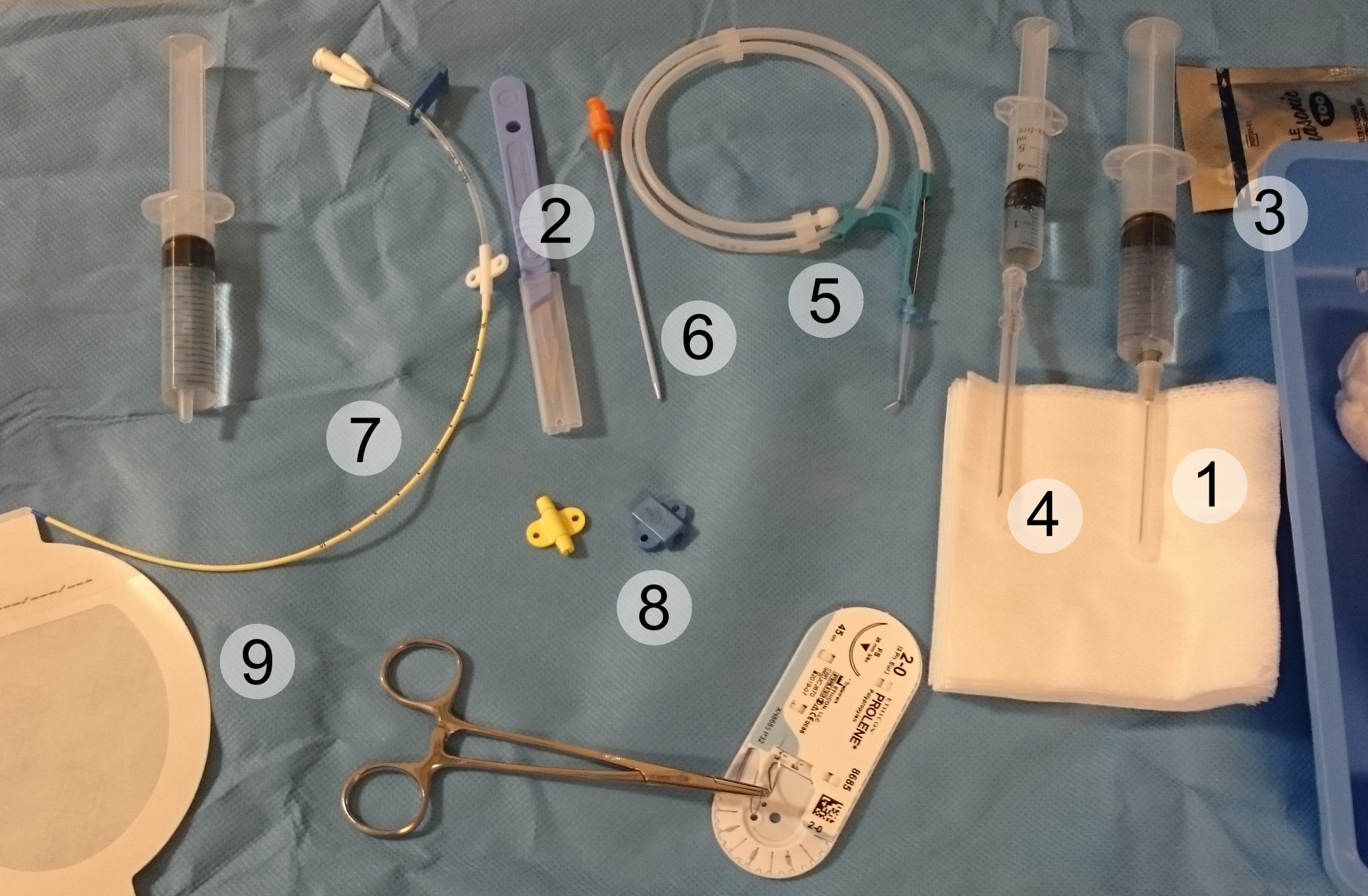|
Quinton Catheter
Quinton catheters are non-tunneled central line catheters, which are often used for acute (i.e. temporary) access for hemodialysis or infusion of medicine when peripheral IV access is not possible (e.g. small vessel caliber, extensive burn injuries). They can also be used to infuse liquids which cause peripheral blood vessel irritation, directly into the vena cavae where they are immediately diluted. The Quinton catheter is named after Wayne Everett Quinton (1921–2015) who was a bioengineer at the University of Washington. Quinton was instrumental in developing a way of delivering kidney dialysis to hundreds of thousands of patients in kidney failure. He worked with doctors Belding Scribner and David Dillard to develop a surgically implanted device in an artery that allows patients with kidney failure to receive regular dialysis. A Quinton catheter has been used to deliver chronic dialysis since the mid-1980s. See also *Central venous catheter A central venous catheter (CVC ... [...More Info...] [...Related Items...] OR: [Wikipedia] [Google] [Baidu] |
Catheter
In medicine, a catheter (/ˈkæθətər/) is a thin tube made from medical grade materials serving a broad range of functions. Catheters are medical devices that can be inserted in the body to treat diseases or perform a surgical procedure. Catheters are manufactured for specific applications, such as cardiovascular, urological, gastrointestinal, neurovascular and ophthalmic procedures. The process of inserting a catheter is ''catheterization''. In most uses, a catheter is a thin, flexible tube (''soft'' catheter) though catheters are available in varying levels of stiffness depending on the application. A catheter left inside the body, either temporarily or permanently, may be referred to as an "indwelling catheter" (for example, a peripherally inserted central catheter). A permanently inserted catheter may be referred to as a "permcath" (originally a trademark). Catheters can be inserted into a body cavity, duct, or vessel, brain, skin or adipose tissue. Functionally, they all ... [...More Info...] [...Related Items...] OR: [Wikipedia] [Google] [Baidu] |
Hemodialysis
Hemodialysis, also spelled haemodialysis, or simply dialysis, is a process of purifying the blood of a person whose kidneys are not working normally. This type of dialysis achieves the extracorporeal removal of waste products such as creatinine and urea and free water from the blood when the kidneys are in a state of kidney failure. Hemodialysis is one of three renal replacement therapies (the other two being kidney transplant and peritoneal dialysis). An alternative method for extracorporeal separation of blood components such as plasma or cells is apheresis. Hemodialysis can be an outpatient or inpatient therapy. Routine hemodialysis is conducted in a dialysis outpatient facility, either a purpose-built room in a hospital or a dedicated, stand-alone clinic. Less frequently hemodialysis is done at home. Dialysis treatments in a clinic are initiated and managed by specialized staff made up of nurses and technicians; dialysis treatments at home can be self-initiated and managed ... [...More Info...] [...Related Items...] OR: [Wikipedia] [Google] [Baidu] |
Vena Cavae
In anatomy, the venae cavae (; singular: vena cava ; ) are two large veins (great vessels) that return deoxygenated blood from the body into the heart. In humans they are the superior vena cava and the inferior vena cava, and both empty into the right atrium. They are located slightly off-center, toward the right side of the body. The right atrium receives deoxygenated blood through coronary sinus and two large veins called venae cavae. The inferior vena cava (or caudal vena cava in some animals) travels up alongside the abdominal aorta with blood from the lower part of the body. It is the largest vein in the human body. MadSci Network: Anatomy. Retrieved 19 September 2013. The superior vena cava (or cranial vena cava in animals) is above the heart, and ... [...More Info...] [...Related Items...] OR: [Wikipedia] [Google] [Baidu] |
Wayne Quinton
Wayne Everett Quinton (January 4, 1921 – January 22, 2015) was a developer of over 30 biomedical devices, including the Quinton catheter. He also invented a lightweight treadmill, for cardiac stress testing - the prototype of those used in fitness centers. Quinton was raised in Rigby, Idaho. He received a degree in mechanical engineering from the University of Washington in 1959. He previously attended Ricks College (now BYU-Idaho) and Montana State University. A week after Pearl Harbor, he arrived in Seattle and began working for Boeing to work on the B-29 bomber. He was hired by the University of Washington for an Arctic Acclimatization study and subsequently as the sole member of the instrument shop. Among Quinton's inventions was a shunt with Belding Scribner and David Dillard that allowed for repeated kidney dialysis procedures on an individual, making the process one that truly extended the patient's life expectancy. He was also involved with the following inventions ... [...More Info...] [...Related Items...] OR: [Wikipedia] [Google] [Baidu] |
Central Venous Catheter
A central venous catheter (CVC), also known as a central line(c-line), central venous line, or central venous access catheter, is a catheter placed into a large vein. It is a form of venous access. Placement of larger catheters in more centrally located veins is often needed in critically ill patients, or in those requiring prolonged intravenous therapies, for more reliable vascular access. These catheters are commonly placed in veins in the neck (internal jugular vein), chest (subclavian vein or axillary vein), groin (femoral vein), or through veins in the arms (also known as a Peripherally inserted central catheter, PICC line, or peripherally inserted central catheters). Central lines are used to administer medication or fluids that are unable to be taken by mouth or would harm a smaller Peripheral vascular system, peripheral vein, obtain blood tests (specifically the "central venous oxygen saturation"), administer fluid or blood products for large volume resuscitation, and m ... [...More Info...] [...Related Items...] OR: [Wikipedia] [Google] [Baidu] |


